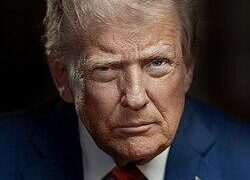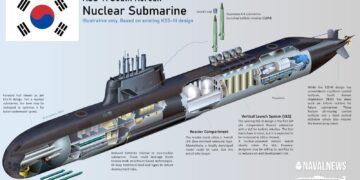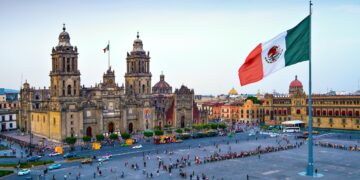Understanding the U.S. Absence at Vietnam’s War Anniversary Parade: A Reflection on Diplomatic Complexities
As Vietnam readies itself to mark a pivotal milestone—the anniversary of the conclusion of the Vietnam War—one conspicuous absence stands out during the official celebrations: that of the United States. Despite decades marked by conflict and a fraught history, recent years have witnessed significant progress in diplomatic relations between Hanoi and Washington. However, the U.S.’s choice not to participate in this commemorative parade reveals deeper layers of complexity within their evolving partnership. This article delves into the underlying reasons for this decision and examines its broader implications for future U.S.-Vietnam relations.
Diplomatic Nuances Behind America’s Non-Participation
The upcoming anniversary event will proceed without formal American representation, highlighting persistent sensitivities rooted in historical memory despite improved bilateral ties since normalization in 1995. This absence is emblematic of ongoing challenges that both nations face as they reconcile their shared past with present-day geopolitical realities.
- Regional Geopolitics: The strategic presence of U.S. military forces across Asia remains a contentious issue, particularly given China’s growing influence and assertiveness in Southeast Asia.
- Domestic Political Considerations: Internal political priorities within the United States may limit overt displays of solidarity at events tied closely to sensitive historical conflicts.
- Divergent Historical Perspectives: Differing narratives about the war continue to shape public opinion and diplomatic postures on both sides.
This decision can be interpreted as a calculated move by Washington to avoid reigniting old wounds while maintaining steady cooperation behind closed doors—especially as trade partnerships deepen and security dialogues intensify.
| Year | Diplomatic Milestone |
|---|---|
| 1995 | Diplomatic Relations Normalized Between U.S. & Vietnam |
| 2000 | Bilateral Trade Agreement Enacted Enhancing Economic Ties |
| 2016 | Lifting of Arms Embargo Signaling Strategic Trust Growth |
| 2023 | An Expanded Strategic Partnership Announced Covering Multiple Sectors |
The Broader Impact on Bilateral Relations Amid Historical Reckoning and Future Cooperation
The absence from such an important national commemoration underscores how deeply intertwined history remains with diplomacy between these two countries—even after nearly three decades since formal reconciliation began. The legacy of conflict still colors perceptions among Vietnamese citizens regarding American involvement, making symbolic gestures like parade participation highly sensitive matters.
Together, however, Vietnam and the United States are increasingly focusing on pragmatic collaboration across several key domains:
- Evolving Economic Ties: Efforts continue to expand trade agreements aimed at mutual growth—such as recent initiatives encouraging increased American investment into Vietnamese technology sectors.[1]
- Securitization Efforts: Joint maritime security operations help counterbalance regional threats while promoting stability throughout critical sea lanes near Southeast Asia.[2]
- Cultural Exchange Programs: Educational scholarships and cultural festivals foster interpersonal connections that transcend political divides.[3]
This dual approach—acknowledging painful histories while building forward-looking partnerships—is essential for sustaining momentum toward deeper engagement between Hanoi and Washington.
A Path Forward: Strengthening Engagement Beyond Symbolic Gestures
The path toward more robust bilateral relations lies beyond ceremonial appearances alone—it requires sustained efforts grounded in shared interests such as economic development, technological innovation, environmental stewardship, and people-to-people diplomacy.
Pursuing joint projects can solidify trust through tangible outcomes rather than symbolic acts alone. Some recommended strategies include:
- Sustained High-Level Dialogues: Regular meetings focused on aligning strategic objectives can build continuity amid shifting global dynamics. Simplified Trade Frameworks: Easing tariffs especially within emerging industries like renewable energy or digital services could accelerate economic integration. Cohesive Research Collaborations: Pooled expertise tackling climate resilience or public health crises would benefit both nations amid global challenges. Cultural Initiatives: Create platforms such as art exhibitions or film festivals celebrating diverse heritages fostering empathy among younger generations.
| Main Area for Cooperation | Tangible Advantages | |
|---|---|---|
| Joint innovations addressing climate change mitigation efforts < / td > < / tr > < tr >< td >Trade Expansion < / td > | Boosted GDP growth via reduced barriers & enhanced market access < / td > < / tr > < tr >< td >Education & Cultural Exchange < / td > | Deeper mutual understanding through academic programs & exchanges < / td > |
A Concluding Perspective: Navigating History While Embracing Collaboration
The forthcoming commemoration marks not only remembrance but also an opportunity—a moment reflecting how far U.S.-Vietnam relations have come despite enduring complexities rooted in war-time legacies. The deliberate choice by America not to partake publicly signals respect toward those memories alongside recognition that reconciliation is an ongoing process requiring patience and sensitivity.
Together moving forward means balancing acknowledgment of difficult histories with proactive engagement across economic, security, environmental, educational—and cultural spheres alike. This nuanced approach offers hope that even amidst unresolved tensions lies potential for meaningful partnership built upon trust rather than mere symbolism alone.















